In this article you’ll find some basic information on copyright law for artists. While I’m not an attorney, I have researched this topic quite a bit to give you some clear guidelines for copyright protection for art and what you need to consider doing as an artist painting, digitizing your art and giving images to art magazines. As I worked with various publishers, I didn’t pay attention to the copyright law for artists and I didn’t ask questions where I should of asked them. Also, I had no idea where fan art ended and fair use began. I hope that this article helps you understand what rights your have to protect your art, how to use photos for references, what fan art and fair use of original art means, and so on. Let’s dive right in.
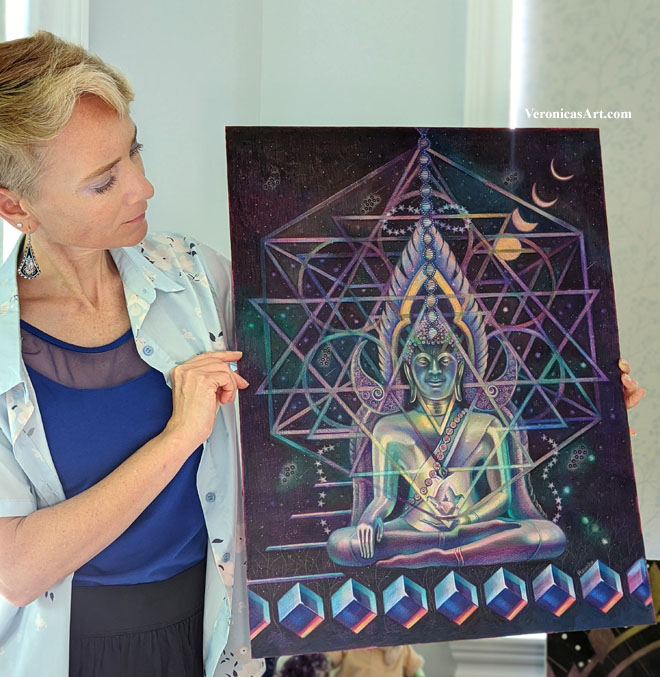
What is copyright protection for art?
Copyright protection for original art is a legal framework that grants creators exclusive rights over their original works of authorship, including art. It provides creators with the ability to control how their works are used and allows them to profit from their creations. Copyright protection arises automatically upon the creation of an original work in a fixed and tangible form, such as a painting, sculpture, or drawing. No registration or formalities are generally required to obtain copyright protection, although registering your work with a copyright office can provide additional benefits.
Here are some key points regarding copyright protection for original art:
- Scope of Protection: Copyright protection extends to a wide range of original art, including paintings, sculptures, drawings, photographs, digital art, and more.
- Exclusive Rights: Copyright grants certain exclusive rights to the creator or copyright owner. These rights typically include the right to reproduce the work, distribute copies, publicly display or perform the work, and create derivative works.
- Duration of Protection: Copyright protection generally lasts for the creator’s lifetime until his death plus 70 years after the artist’s death in the US. The exact duration depends on various factors, including the country where the copyright is sought and whether the work was created by an individual or a corporate entity.
- Copyright Infringement of Original Art: When someone uses a copyrighted work without authorization, it is considered copyright infringement. This includes copying, distributing, displaying, or creating derivative works based on the original art. Copyright owners have the right to take legal action against infringers and seek remedies such as damages and injunctions.
- Fair Use in Art: Fair use is a legal doctrine that allows limited use of copyrighted material without permission from the copyright owner. Fair use is determined on a case-by-case basis and considers factors such as the purpose and character of the use, the nature of the copyrighted work, the amount used, and the effect on the market for the original work. Fair use is a complex concept and often subject to interpretation. More on this topic of fair use of original art later.
- International Protection: Copyright protection is recognized internationally through various international agreements and treaties. While specific laws and regulations may differ between countries, the Berne Convention for the Protection of Literary and Artistic Works and the Agreement on Trade-Related Aspects of Intellectual Property Rights (TRIPS) are two international agreements that establish minimum standards for copyright protection.
- Copyright Notice and Registration: While not mandatory, it is generally recommended to include a copyright notice (e.g., “Copyright © [year] [name]”) on your art to inform others of your rights. Additionally, registering your work with a copyright office provides certain advantages, such as the ability to sue for statutory damages and attorney’s fees in case of infringement.
What’s the copyright duration after the first publication of original art in the U.S.?
In the United States, copyright protection for original art begins automatically upon the creation of an original work fixed in a tangible medium of expression. Since March 1, 1989, registration with the U.S. Copyright Office is not required to secure copyright protection, although it is beneficial for enforcement purposes. The Copyright Act of 1976 went into effect on January 1, 1978, which means that any original art created after this date is automatically copyrighted by the creator and lasts for 70 years after the artist’s death.
This copyright law for artists has undergone some amendments and updates since 1976, including the Digital Millennium Copyright Act (DMCA) in 1998 and the Music Modernization Act (MMA) in 2018. These amendments have addressed emerging issues related to digital media, internet, and other technological advancements.
The copyright duration of original art depends on several factors, including the type of work and when it was created. Here are the general guidelines for copyright duration in the United States, based on the current copyright law (as of September 2021):
For works created by an individual artist:
- Original art created on or after January 1, 1978: The copyright duration is the life of the author plus 70 years after the author’s death.
- Anonymous works or works created under a pseudonym: The copyright duration is 95 years from the year of first publication or 120 years from the year of creation, whichever expires first.
- Works created before January 1, 1978, but not published or registered by that date: The copyright duration is the same as if they were created on or after January 1, 1978 (life of the author plus 70 years).
For works created by a corporate entity or “works made for hire”:
- Works created on or after January 1, 1978: The copyright duration is 95 years from the year of first publication or 120 years from the year of creation, whichever expires first.
These guidelines are subject to various exceptions, extensions, and specific circumstances. For example, certain works created by the U.S. government, copyright restoration for foreign works, and copyright terms under previous copyright laws may have different durations. Copyright protection for art and its duration varies in other countries as each country has its own copyright laws and regulations. It is crucial to consult the copyright laws of the specific jurisdiction in question to determine the applicable copyright duration. For up-to-date information on copyright duration, consult an intellectual property attorney or refer to the U.S. Copyright Office website.
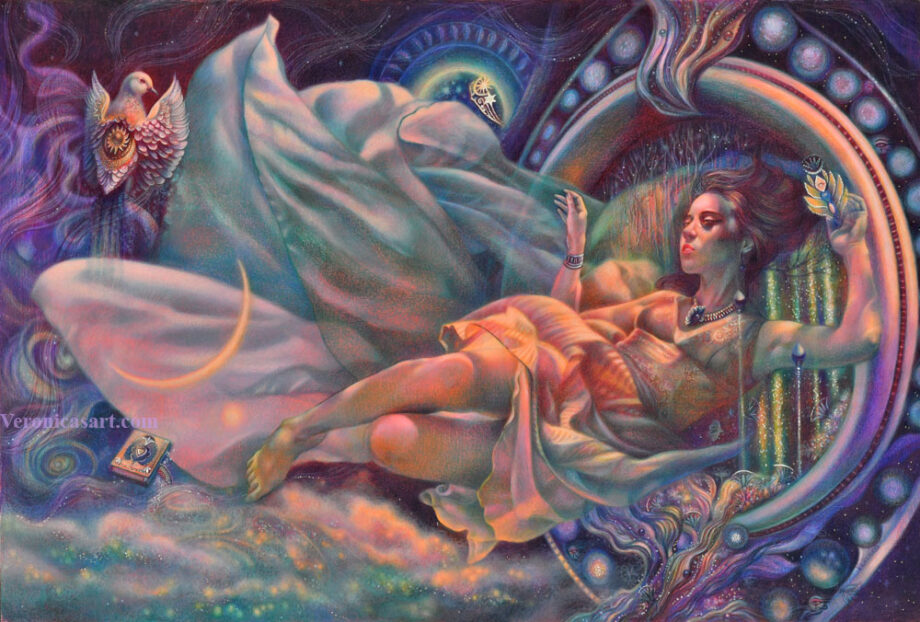
Does copyright protection for art in the U.S. work in other countries?
Copyright protection for art in the United States does not automatically extend to other countries. Copyright is primarily territorial, meaning that it is granted and enforced based on the laws of each individual country. So, while your artwork may be protected by copyright in the United States, it does not guarantee the same level of protection in other countries.
However, there are international agreements and treaties in place to facilitate and harmonize copyright protection across borders. The most significant of these is the Berne Convention for the Protection of Literary and Artistic Works, which has been ratified by a large number of countries worldwide. Under the Berne Convention, member countries must provide a minimum level of copyright protection to works originating from other member countries, treating them in a manner no less favorable than their own nationals. Other international agreements, including the Universal Copyright Convention (UCC) and the Agreement on Trade-Related Aspects of Intellectual Property Rights (TRIPS), also help establish standards and mechanisms for protecting copyright internationally but it will depend on country by country basis. Son don’t count on this! Here is the case of a famous artist-photographer Jingna Zhang whose photography was stolen yet she lost her case in a European court because of differences in law of two countries.
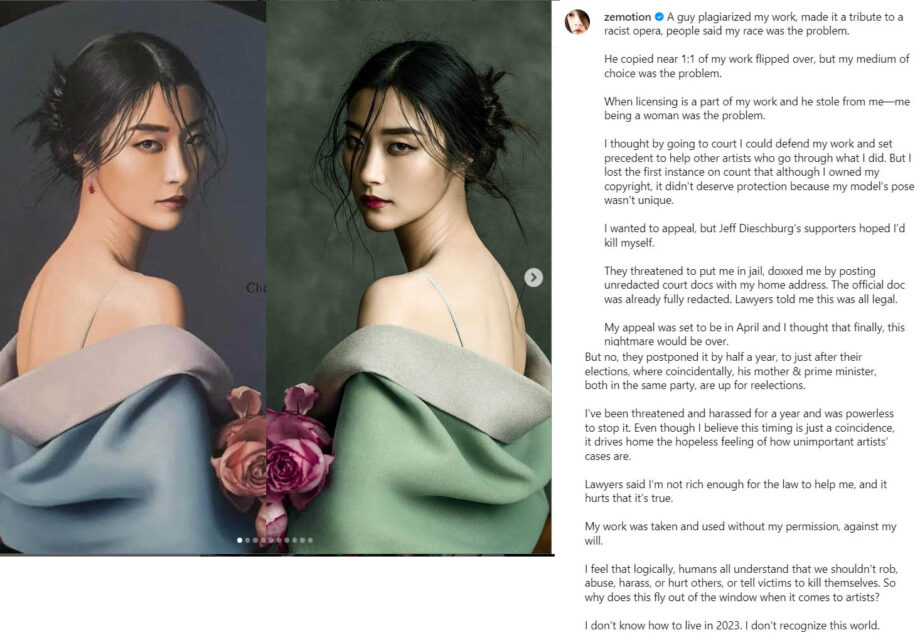
When art is in the public domain in the United States?
In copyright law for visual artists the image enters public domain depending on a year of first publication. In the United States, original art published before 1923 is considered to be in the public domain. Art can be freely used, reproduced, and modified without permission from the original creator. So to avoid the copyright infringement of original art is not to use art imagery created after 1923.
Art published between 1923 and 1977: The copyright duration for these works varies. If the copyright was properly renewed, the copyright term is 95 years from the year of first publication. However, many works from this period have fallen out of copyright due to failure to renew or comply with other formalities. Determining the copyright status of works from this period may require further research.
Works published from 1978 onwards: For original art created by individuals, the general rule of life of the author plus 70 years applies. After this duration, the work enters the public domain. However, different rules may apply to works created by corporations or works made for hire.
Determining the public domain status of a specific artwork can sometimes be complex. Copyright protection for art can vary between countries. The public domain status of an original painting in one country may not necessarily apply globally. For works from other countries, the copyright duration and public domain criteria should be checked according to the laws of the respective country.
What are copyright law renewal rules in the US?
Copyright renewal rules in the United States were applicable to works published between 1923 and 1977. Prior to the current copyright law, which went into effect in 1978, copyright owners had to follow specific renewal requirements to extend the duration of their copyright protection.
Pre-1978 Copyright Law: Under the Copyright Act of 1909, which was in effect until December 31, 1977, copyright protection initially lasted for 28 years from the date of publication. At the end of this initial term, copyright owners had the option to renew the copyright for an additional 28-year period. To renew the copyright, the copyright owner had to file a renewal registration with the U.S. Copyright Office during the 28th year of the original copyright term. This renewal registration had to include specific information and be accompanied by a fee. If the copyright owner failed to file a proper renewal registration, the copyright expired at the end of the initial 28-year term, and the work entered the public domain. Renewal requirements varied depending on the year of publication. Before 1964, renewal registration had to be made with the Copyright Office. From 1964 to 1977, renewal could be accomplished through either actual renewal registration or by virtue of a publication with a proper copyright notice.
Subsequent Copyright Law Changes: The copyright renewal requirements changed with the enactment of the Copyright Act of 1976, which went into effect on January 1, 1978. Under the current law, renewal registration is no longer necessary to maintain copyright protection for art. Works created after 1977 are granted copyright protection automatically upon creation, and the duration is based on the life of the author plus 70 years. Determining the renewal status of a specific work published between 1923 and 1977 can be complex. The renewal requirements were subject to various rules, formalities, and deadlines, and not all works were renewed.

What is copyright protection for art on movie stills and publicity photos?
Copyright law regarding movie stills and publicity photos is generally similar to copyright protection for other types of visual works. In the United States, movie stills and publicity photos are considered creative works, and they can be protected by copyright if they meet the requirements of originality and fixation in a tangible medium of expression.
Ownership: The copyright in movie stills and publicity photos is typically owned by the person or entity that created them. In most cases, this is the photographer or the studio/company that commissioned the photographs.
Duration: Copyright protection for movie stills and publicity photos is governed by the same duration rules as other visual works. For works created by an individual, the general rule is that copyright lasts for the life of the author plus 70 years after their death. For works created by a corporate entity or as “works made for hire,” the copyright duration is typically 95 years from the year of first publication or 120 years from the year of creation, whichever expires first.
Fair Use: The fair use doctrine can apply to movie stills and publicity photos, allowing limited use of copyrighted material without permission from the copyright owner. Fair use is determined on a case-by-case basis and considers factors such as the purpose and character of the use, the nature of the copyrighted work, the amount used, and the effect on the market for the original work.
Licensing and Permissions: Using movie stills and publicity photos without proper authorization may infringe upon the copyright owner’s rights. To legally use these images, it is generally necessary to obtain permission from the copyright owner or their authorized representative. This may involve negotiating a license, paying a fee, or complying with specific terms and conditions.
The copyright law on movie stills and publicity pictures is complex, plus other countries have their own copyright laws.
Iconic Movie stills & copyright infringement of original art
Movie stills from iconic movies like Star Wars, Mission Impossible, the Dune and alike are generally subject to copyright protection. As creative works fixed in a tangible medium, movie stills are considered original expressions and are typically protected by copyright law. This applies to stills from well-known movies. The copyright in movie stills is typically owned by the photographer who took the stills or the studio/company that commissioned the photographs. The duration of copyright protection for these stills follows the general rules mentioned earlier, typically lasting for the life of the author plus 70 years or a specific period based on corporate ownership.
Using movie stills from iconic movies without proper authorization or a valid legal basis may infringe upon the copyright owner’s rights. To use movie stills legally, it is generally necessary to obtain permission from the copyright owner or their authorized representative. This may involve negotiating a license, paying a fee, or complying with specific terms and conditions. Unauthorized use of copyrighted material can lead to legal consequences, including claims of copyright infringement. If you intend to use movie stills from Star Wars or any other copyrighted work, it is advisable to consult with a copyright attorney or seek permission from the copyright owner or their representatives for specific guidance and permissions tailored to your intended use.
Fan art & copyright infringement in art
Fan art refers to artwork created by fans that is based on characters, settings, or other elements from existing copyrighted works such as movies, TV shows, books, or video games. Fan art is a complex area of copyright law, and its legality depends on various factors.
Fan art is generally considered a derivative work because it incorporates elements or characters from existing copyrighted works. Copyright law for artists grants the original copyright owner the exclusive right to create derivative works based on their original work. Creating and distributing fan art without permission from the copyright owner may infringe upon their rights. It involves copying, displaying, and distributing copyrighted elements without authorization, which is generally considered copyright infringement.
Fan art & fair use
Fan art may potentially qualify as fair use under certain circumstances. Fair use is a legal doctrine that allows limited use of copyrighted material without permission from the copyright owner. The determination of fair use depends on various factors, including the purpose and character of the use, the nature of the copyrighted work, the amount used, and the effect on the market for the original work.
However, the legality of fan art under fair use is a complex and context-specific analysis, and each case is evaluated individually. Merely labeling something as fan art does not automatically qualify it as fair use. It’s a fact-specific determination that requires considering the specific details of the artwork and the relevant legal principles. For example, images of Star Wars movies, including promotional stills and other related materials, are not in the public domain. Star Wars is a highly copyrighted and trademarked franchise owned by Lucasfilm Ltd., which is now a subsidiary of The Walt Disney Company. The original Star Wars films, as well as subsequent releases and associated materials, remain protected by copyright. As a general rule, copyright protection lasts for several decades after the death of the author or the creation of the work, depending on the applicable copyright laws. For Star Wars movies and associated images, the copyright protection is held by the copyright owner, typically the production company or studio.
Some copyright holders may tolerate or even encourage fan art within certain limits. They may allow fan art to exist as a form of fan expression and promotion of their original work. Some copyright holders may establish guidelines for fan art or grant licenses for its creation and distribution.
Many artists use pictures of famous people for their art or create art based on famous artist style. Depending on the amount of modification of the original, such new, created art can pass as a new creation because it's been modified enough to count as a new artwork. Some artists paint in the style of Picasso or Vermeer but they don't infringe on the copyright because of a considerable modification of the original. There is a debate about the AI art trained to create pictures based on some famous artists and art. Some artists are furious about this but the thing is, the copyright for art may fall into this category of 'created in the style of'' or modified enough to pass as a new artwork. It will be interesting to see how the copyright law changes with the introduction of AI-generated images.
Fan art & Commercial use
The commercial use of fan art, such as selling prints or merchandise featuring the artwork, can increase the likelihood of copyright infringement claims. Commercial use typically carries greater risk because it can impact the market for the original work and may be seen as exploiting the copyrighted material for financial gain.
Copyright law for artists can vary between countries, and the legal status of fan art may differ accordingly. If you plan to create or use fan art, it is advisable to consult with a copyright attorney who can provide guidance based on the specific circumstances and applicable copyright laws in your jurisdiction.
What is fair use of original art?
Fair use is a legal doctrine in copyright law that allows for limited use of copyrighted material without obtaining permission from the copyright owner. It is a flexible and context-specific concept that aims to strike a balance between the rights of copyright holders and the public’s interest in accessing and using creative works. While fair use is primarily based on the U.S. legal framework, similar concepts exist in other countries, although they may be referred to by different names or have different criteria.
The four factors determining fair use under U.S. copyright law are:
- Purpose and Character of the Use: This factor examines the purpose and character of the use of the copyrighted material. Transformative uses, where the work is modified or used in a new or different context, are more likely to be considered fair use. Nonprofit, educational, or critical uses are also often favored under this factor.
- Nature of the Copyrighted Work: The nature of the copyrighted work is considered, such as whether it is factual or creative. The fair use defense may be stronger for using works that are more factual or published.
- Amount and Substantiality of the Use: The amount and substantiality of the copyrighted material used in relation to the entire work are evaluated. Using small portions or excerpts of a work may be more likely to be considered fair use, especially if it does not affect the market value of the original work.
- Effect on the Market for the Original Work: The impact of the use on the market for the original work is assessed. If the use of the copyrighted material negatively impacts the market potential or potential licensing opportunities for the original work, it may weigh against fair use.
Fair use is a nuanced and fact-specific analysis. No bright-line rules exist, and courts consider each case individually, weighing these factors and considering other relevant circumstances. Fair use determinations can vary depending on the specific facts and context of the use, and the outcome may differ between different cases. In the context of art, fair use may be relevant when artists incorporate copyrighted material into their work for purposes such as commentary, criticism, parody, or transformative expression. However, each case must be evaluated on its own merits with legal advice from a copyright attorney.
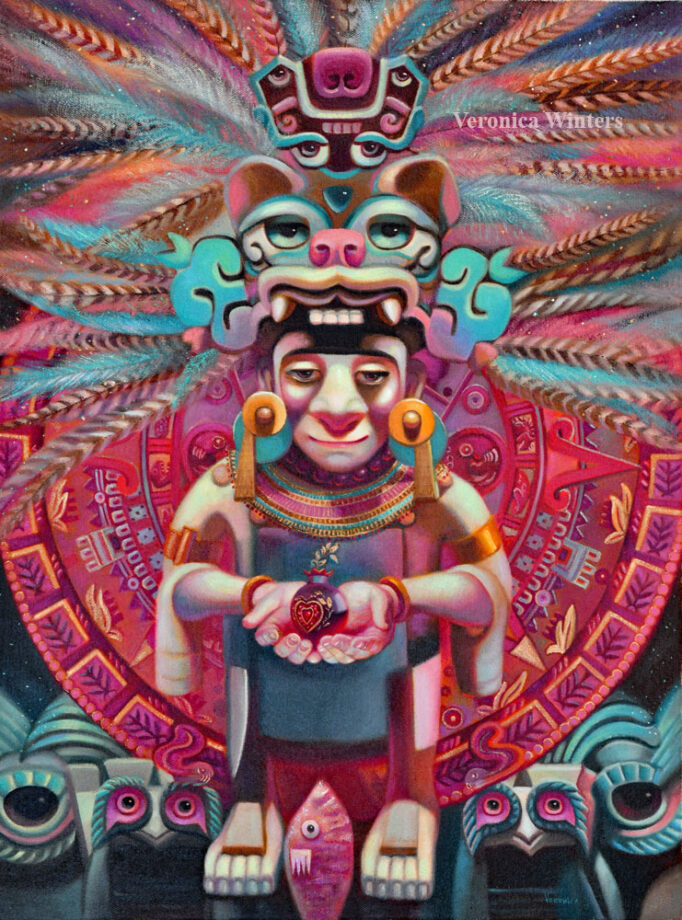
How to register a copyright for original art?
Copyright law for visual artists is clear on one thing. Copyright registration for original art is not a requirement for obtaining copyright protection. Copyright protection begins automatically upon the creation of the artwork. However, registration offers certain benefits, such as the ability to sue for statutory damages and attorney’s fees in case of infringement. It also serves as public evidence of the copyright claim.
To register a copyright for original art in the United States, follow these steps:
- Create the Artwork: Copyright protection arises automatically upon the creation of an original work in a fixed and tangible form. Before registering a copyright, ensure that your artwork is complete and fixed in a physical or digital format.
- Determine Eligibility: Not all works are eligible for copyright protection. Generally, original works of authorship, including paintings, sculptures, drawings, and digital art, are eligible. However, facts, ideas, and common symbols or designs may not qualify for copyright protection.
- Complete the Application: Visit the website of the U.S. Copyright Office https://copyright.gov/ and navigate to the Register your Works system. Create an account and follow the instructions to complete the online application. Provide accurate information about the artwork, the author, and the copyright claim.
- Submit Deposit Materials: As part of the registration process, you’ll need to submit deposit materials, which typically include copies of the artwork. The specific requirements may vary based on the nature of your art (physical or digital). Follow the guidelines provided by the Copyright Office for submitting deposit materials.
- Pay the Registration Fee: There is a registration fee associated with copyright registration. The fee amount depends on various factors, such as the type of work and the method of submission. Make sure to pay the fee as required by the Copyright Office.
- Wait for Processing: The processing time can vary, but it generally takes several months for the registration to be completed. You may receive a certificate of registration once the process is finished.
| Registration of a claim in an original work of authorship copied from the Copyright Office | |
| Electronic filing: | |
| Single author, same claimant, one work, not for hire | $45 |
| Standard Application | $65 |
| Paper Filing (Forms PA, SR, TX, VA, SE) | $125 |
| Registration of a claim in a group of unpublished works | $85 |
| Registration of a claim in a group of published photographs or a claim in a group of unpublished photographs | $55 |
| Registration of a claim in a group of works published on an album of music | $65 |
| Registration of a claim in a group of serials (per issue, minimum two issues) | $35 |
| Registration of a claim in a group of newspapers or a group of newsletters | $95 |
| Registration of a claim in a group of contributions to periodicals | $85 |
| Registration of a claim in a group of short online literary works | $65 |
| Registration of updates or revisions to a database that predominantly consists of non-photographic works | $500 |
| Registration for a database that predominantly consists of photographs and updates thereto: | |
| Electronic filing | $250 |
| Paper filing | $250 |
| Registration of a renewal claim (Form RE): | |
| Claim without addendum | $125 |
| Addendum (in addition to the fee for the claim) | $100 |
| Registration of a claim in a restored copyright (Form GATT) | $100 |
| Preregistration of certain unpublished works | $200 |
| Registration of a correction or amplification to a claim | |
| Supplementary registration | |
| Electronic filing | $100 |
| Paper Filing for correction or amplification of renewal registrations, GATT registrations, and group registrations for non-photographic databases (Form CA) | $150 |
| Correction of a design registration: Form DC | $100 |
| Registration of a claim in a mask work (Form MW) | $150 |
| Registration of a claim in a vessel design (Form D/VH) | $500 |
The benefits of copyright registration for original art
The specific benefits of copyright registration for original art may vary between countries, and the advantages mentioned below primarily apply to the United States.
Legal Evidence: Copyright registration provides a public record of your copyright claim, serving as evidence of the validity of your copyright and the date of creation. This can be crucial if you need to enforce your rights in court, as it simplifies the process of proving ownership.
Statutory Damages and Attorney’s Fees: If you register your artwork with the copyright office prior to infringement or within a specific time period after publication, you may be eligible to seek statutory damages and attorney’s fees in a copyright infringement lawsuit. Statutory damages can provide compensation even if you cannot prove the actual damages you suffered, and attorney’s fees coverage can significantly reduce the financial burden of litigation.
Presumption of Ownership: Copyright registration creates a legal presumption of ownership and the validity of your copyright. This means that in case of a dispute or infringement, the burden of proof may shift to the opposing party to challenge your copyright claim.
Enhanced Remedies: Registration allows you to seek additional remedies in court, such as the possibility of obtaining an injunction to stop the infringing use of your art. It also opens up the potential for higher damages in some cases.
Licensing and Commercial Opportunities: Copyright registration can enhance your credibility and make it easier to negotiate licensing agreements and commercialize your art. It provides a clear demonstration of your commitment to protecting your work, which can be attractive to potential licensees or buyers.
International Protection: Copyright registration in your home country may also facilitate copyright protection in other countries. Many countries recognize and respect the registration of copyright in other jurisdictions through international treaties and agreements.
Copyright law for visual artists in art magazines
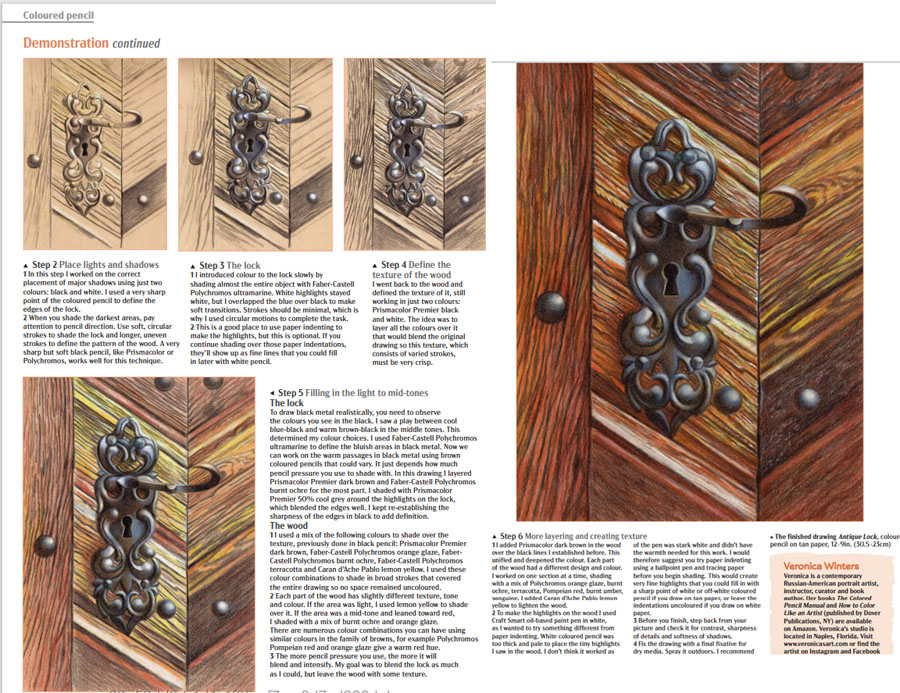
The ownership of copyright in a scenario where an art magazine prints an artwork depends on the specific circumstances and agreements involved. Generally, the copyright ownership remains with the artist who created the artwork unless there is a transfer or assignment of rights in a written format. Also, in general, images belong to the artist but the writing may not!
Here are a few possibilities:
- License or Permission: The artist may grant the art magazine a license or permission to reproduce and publish the artwork in the magazine. In this case, the artist retains copyright ownership, but the magazine has limited rights to use the artwork as specified in the license agreement.
- Work Made for Hire: If there is a contractual agreement stating that the artist created the artwork as a “work made for hire” for the magazine, then the copyright ownership may belong to the magazine as the employer or commissioning party. However, specific requirements must be met for a work to be considered a “work made for hire” under copyright law.
- Assignment of Rights: The artist may assign or transfer their copyright ownership to the art magazine through a written agreement. This means that the magazine becomes the new owner of the copyright for the artwork.
The default assumption is that the artist retains copyright ownership unless there is a clear agreement to transfer or assign rights. The specific terms and conditions should be outlined in a written agreement between the artist and the art magazine to clarify the ownership and usage rights of the artwork. If you are a visual artist and you are approached by an art magazine or any other publication to feature your artwork, it’s advisable to review any agreements or contracts carefully, consider consulting with a copyright attorney, and negotiate the terms to ensure that you retain appropriate rights and receive fair compensation for the use of your art. I would ask the editor directly about the copyright ownership before agreeing to give art or write a specific article.
Ai-generated art & copyright infringement in art
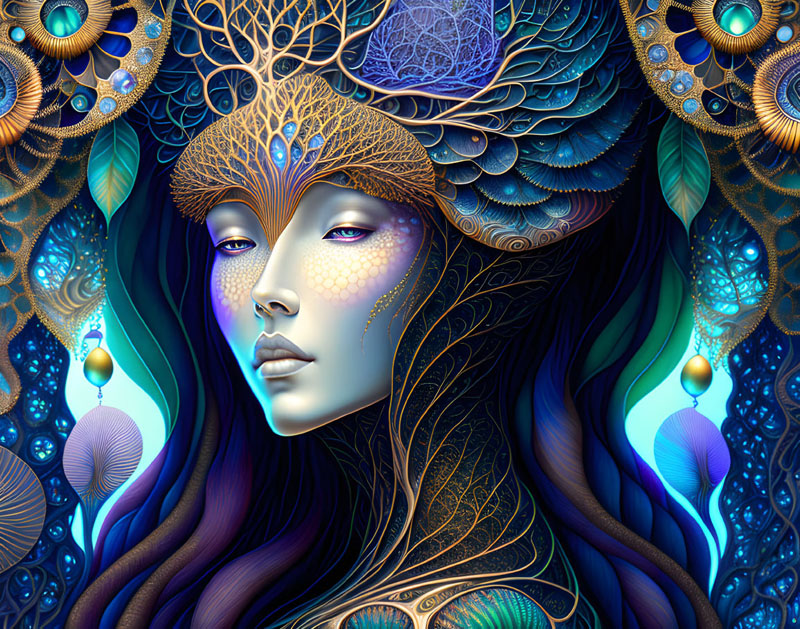
The application of copyright law to AI-created images is evolving as technology advances. Here are some key considerations regarding copyright law for visual artists and AI-generated images:
- Authorship: In traditional copyright law, authorship is typically attributed to human creators. However, when it comes to AI-generated images, determining authorship becomes more complicated. If an AI system autonomously creates an image without human intervention, the question of who qualifies as the author may arise. Different jurisdictions may have different approaches to this issue, and legal frameworks may need to be adapted to address the unique aspects of AI-generated works.
- Human Involvement: If human input, creative choices, or interventions are involved in the AI-generated image, the law may consider the human as the author or co-author, depending on the extent of their contribution. For instance, if an artist utilizes AI tools as a tool to assist or enhance their creative process, they may retain copyright over the resulting work.
- Originality and Fixation: Copyright protection generally requires that a work be original and fixed in a tangible medium of expression. If an AI system generates images based on pre-existing works or data without adding sufficient originality, the resulting images may not meet the threshold of originality required for copyright protection. However, if the AI system creates novel and original images that are fixed in a tangible medium, they may qualify for copyright protection.
- Ownership: Ownership of copyright in AI-generated images can be complex and may depend on various factors, such as contractual agreements or specific laws in the jurisdiction. It is important to consider who owns or controls the AI system, as well as any agreements or terms of use associated with its usage.
- Derivative Works: If an AI-generated image is based on pre-existing copyrighted works, it may be considered a derivative work. Creating and distributing AI-generated images based on copyrighted materials without permission may infringe upon the original copyright owner’s rights.
- Fair Use and Transformative Use: The fair use doctrine, which allows limited use of copyrighted material without permission, may apply to AI-generated images under certain circumstances. If the AI-generated image is used for purposes such as criticism, commentary, parody, or transformative use, it may be considered fair use. However, fair use is a fact-specific analysis and should be evaluated on a case-by-case basis.
I hope that this article helps you protect your original art and make informative decisions about the copyright law for visual artists moving forward.
One of the helpful books about art law, corruption in the art market and other issues can be found in this book- “Art Law in a Nutshell” by DuBoff-King.